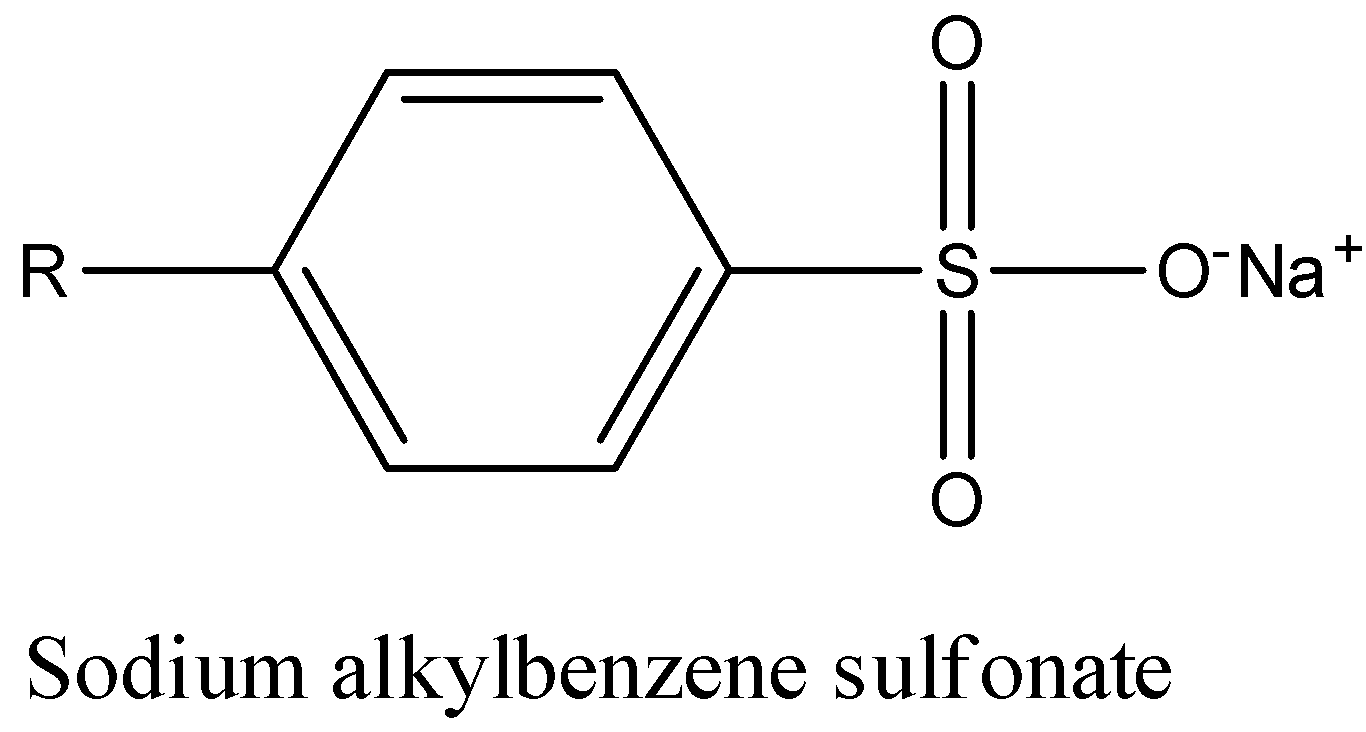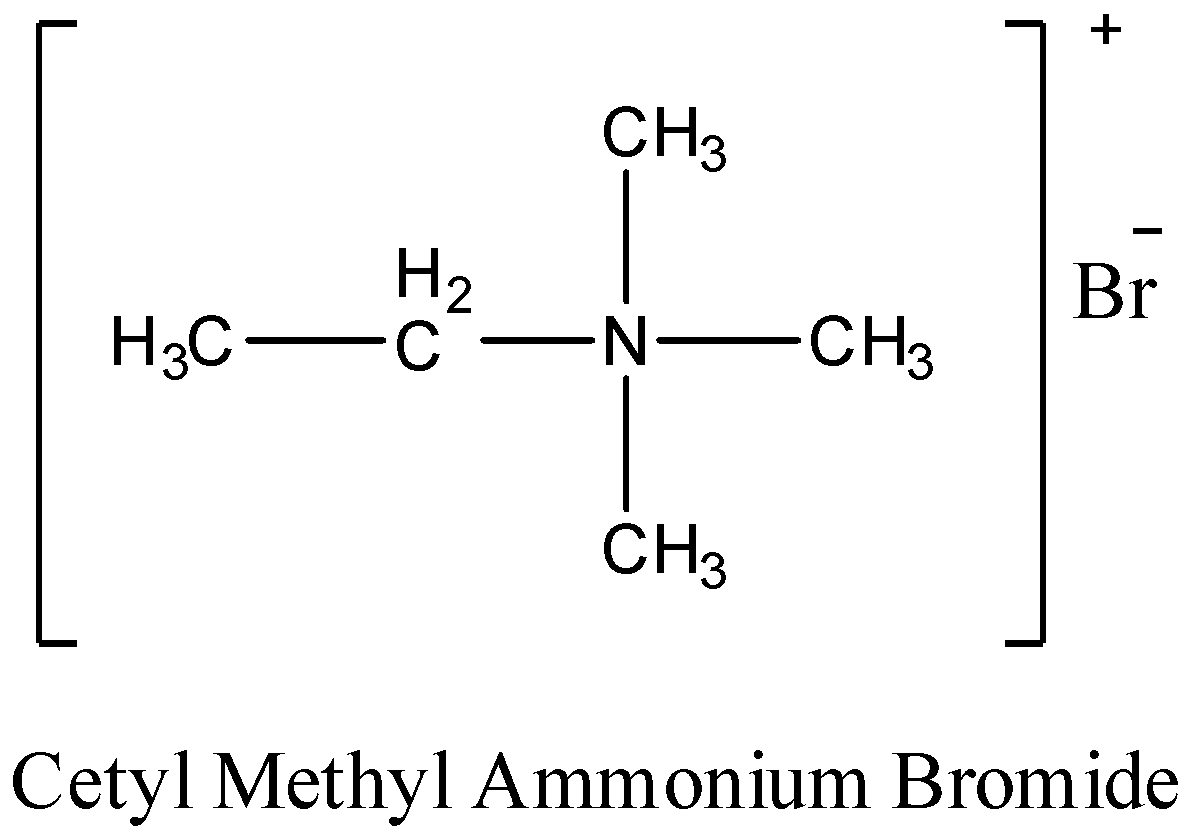
What are biodegradable and non-biodegradable detergents? Give one example of each.
Answer
518.1k+ views
1 likes
Hint: The biodegradable, and non-biodegradable detergents can be defined in consideration with the various factors like structure, or it can be destroyed or not.
Complete step by step answer:
Now, first let us know about the detergents. As we know detergents are the cleansing agents as we use it to clean the clothes.Thus, we can specify the detergents like laundry detergents, or the dish detergents.Detergents are available in the powder form.
So, the detergents are classified into two types i.e. biodegradable, and non-biodegradable detergents.
-First, let us define the biodegradable detergents. These detergents are the straight hydrocarbon chain molecules.
From the biodegradable word we can say that these types of detergents are degraded; it means that they can be destroyed by the bacteria, or any other agents.
We have sodium alkyl benzene sulphonate as an example of biodegradable detergents.
The structure of the above is shown below-

-Second, we have non-biodegradable detergents. These detergents exist in branched hydrocarbon chains.
As we know that non-biodegradable relates to the non-destructive, and leads to the cause of pollution. So, non-biodegradable detergents cannot be destroyed by bacteria.
Cetyl methyl ammonium bromide as an example of non-biodegradable detergents. The structure of the above compound is shown below-

Note:
Synthetic detergents are further classified into three type on the basis of their charges
(i) Cationic detergents- These are basically quaternary ammonium salts of bromides, chlorides and acetates.
(ii) Anionic detergents- It is a long chain of sodium alcohol salts.
(iii) Non-ionic detergents.-These are high molecular mass esters with no ions present in the molecules.
Complete step by step answer:
Now, first let us know about the detergents. As we know detergents are the cleansing agents as we use it to clean the clothes.Thus, we can specify the detergents like laundry detergents, or the dish detergents.Detergents are available in the powder form.
So, the detergents are classified into two types i.e. biodegradable, and non-biodegradable detergents.
-First, let us define the biodegradable detergents. These detergents are the straight hydrocarbon chain molecules.
From the biodegradable word we can say that these types of detergents are degraded; it means that they can be destroyed by the bacteria, or any other agents.
We have sodium alkyl benzene sulphonate as an example of biodegradable detergents.
The structure of the above is shown below-

-Second, we have non-biodegradable detergents. These detergents exist in branched hydrocarbon chains.
As we know that non-biodegradable relates to the non-destructive, and leads to the cause of pollution. So, non-biodegradable detergents cannot be destroyed by bacteria.
Cetyl methyl ammonium bromide as an example of non-biodegradable detergents. The structure of the above compound is shown below-

Note:
Synthetic detergents are further classified into three type on the basis of their charges
(i) Cationic detergents- These are basically quaternary ammonium salts of bromides, chlorides and acetates.
(ii) Anionic detergents- It is a long chain of sodium alcohol salts.
(iii) Non-ionic detergents.-These are high molecular mass esters with no ions present in the molecules.
Latest Vedantu courses for you
Grade 10 | CBSE | SCHOOL | English
Vedantu 10 CBSE Pro Course - (2025-26)
School Full course for CBSE students
₹37,300 per year
Recently Updated Pages
Master Class 12 Biology: Engaging Questions & Answers for Success

Master Class 12 Physics: Engaging Questions & Answers for Success

Master Class 12 Business Studies: Engaging Questions & Answers for Success

Class 12 Question and Answer - Your Ultimate Solutions Guide

Master Class 11 Accountancy: Engaging Questions & Answers for Success

Master Class 11 Physics: Engaging Questions & Answers for Success

Trending doubts
When was the first election held in India a 194748 class 12 sst CBSE

What are the major means of transport Explain each class 12 social science CBSE

Savarkar was released from jail in the year A1889 B1905 class 12 social science CBSE

State Snells first and second law of refraction class 12 physics CBSE

How do you convert from joules to electron volts class 12 physics CBSE

Why did French artist Frederic sorrieu prepare a series class 12 social science CBSE




